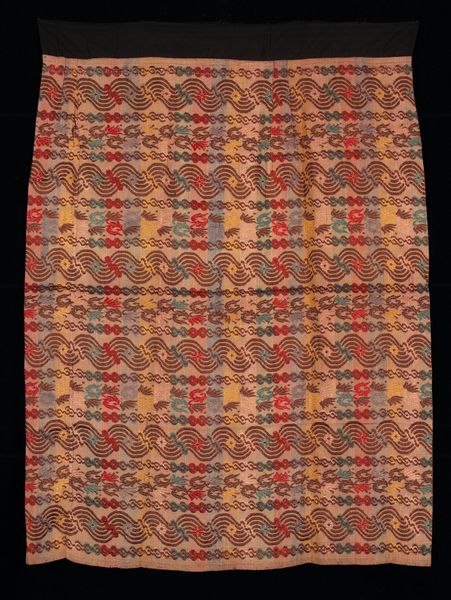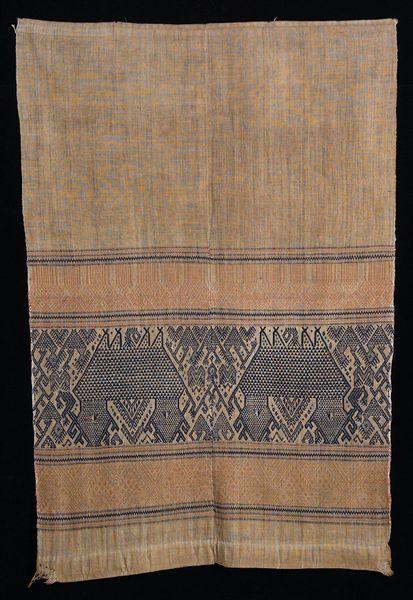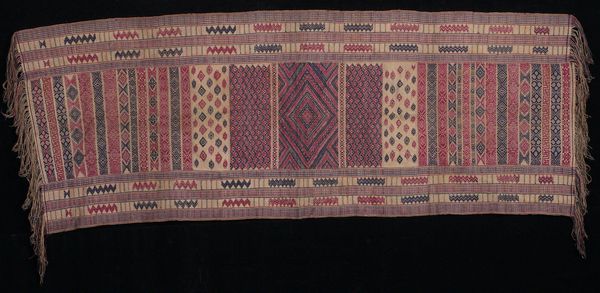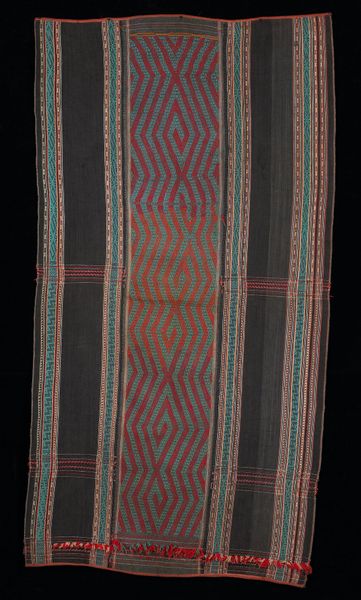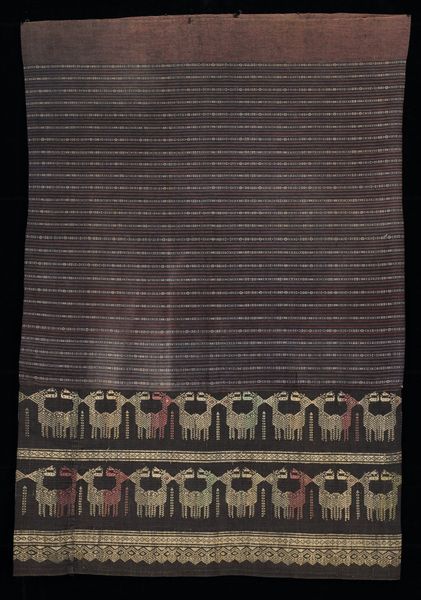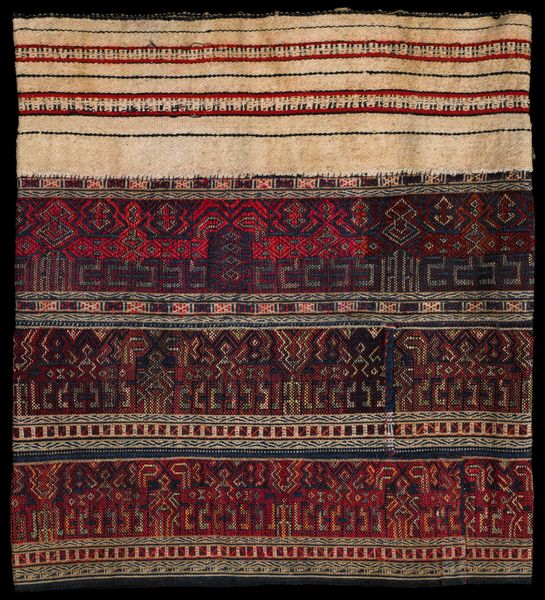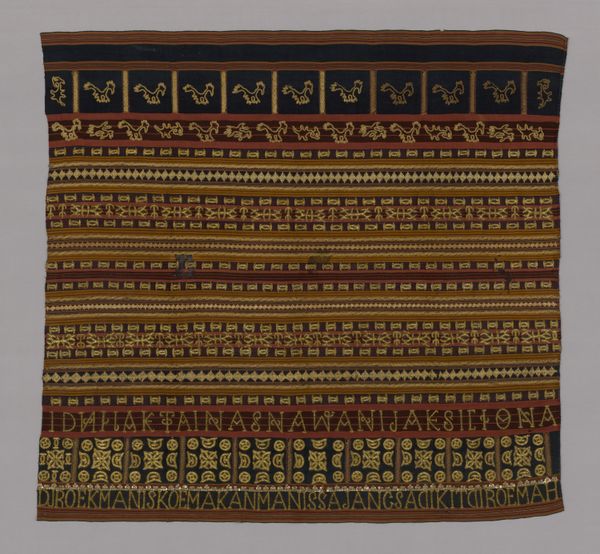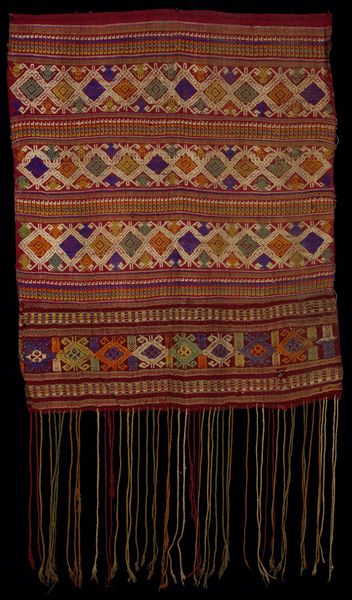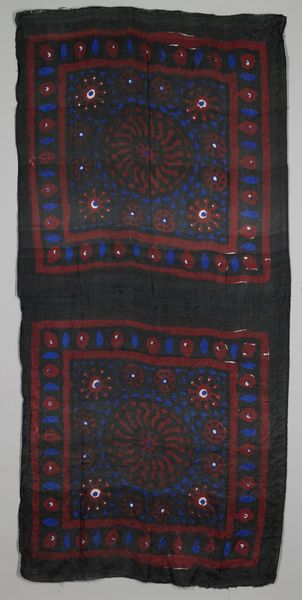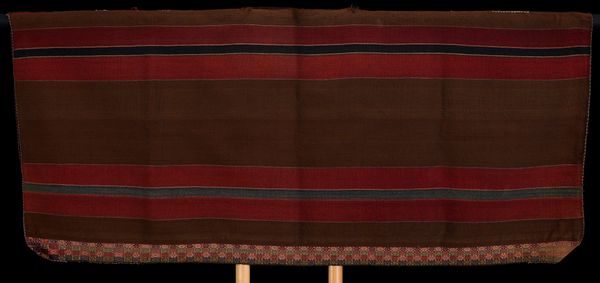
silk, weaving, textile, cotton
#
silk
#
asian-art
#
weaving
#
textile
#
fashion and textile design
#
hand-embroidered
#
pattern design
#
fabric design
#
repetition of pattern
#
regular pattern
#
pattern repetition
#
cotton
#
textile design
#
imprinted textile
#
layered pattern
Dimensions: 29 7/8 x 25 3/8 in. (75.88 x 64.45 cm)
Copyright: Public Domain
Editor: Here we have a Thai skirt, made around the 20th century, woven from silk. It’s part of the collection at the Minneapolis Institute of Art. I’m struck by the intricate pattern, almost like code embedded in the fabric. How do you interpret this work, particularly its role within Thai society? Curator: The regularity of pattern here definitely suggests a formalized system of knowledge, a social language embedded in textile. It’s crucial to understand these skirts weren’t merely clothing; they communicated status and regional identity. Think about how specific patterns became associated with certain families or communities. What do you think that means in the broader political and institutional landscape? Editor: It implies these garments served as visual declarations of allegiance, right? Perhaps signaling alliances, social positions, even resistance? Curator: Exactly! This is where art becomes intertwined with power dynamics. The wearing, displaying, and even the gifting of such a skirt were all politically charged acts. Institutions preserve such items and thus reinforce certain power structures, and create narratives about culture. Who do you think controls those narratives, and why does that matter? Editor: That's something I definitely have to think more about – the narratives told and those left untold by museums and collections like these. Curator: Museums should embrace multiple viewpoints, offering the public an opportunity to see an object such as this as something far more complex than simple cultural heritage, including a symbol of resistance. We need to keep asking whose story is being privileged and how we might decolonize the perspective. Editor: Absolutely, it's fascinating to consider how an object as seemingly simple as a skirt could reflect such complex cultural and political narratives.
Comments
No comments
Be the first to comment and join the conversation on the ultimate creative platform.
